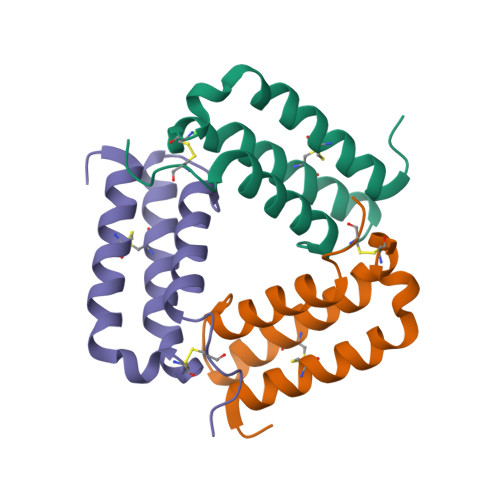
Top ▲

GtoPdb is requesting financial support from commercial users. Please see our sustainability page for more information.
| Quaternary Structure: Subunits |
| RAMP2 (Accessory protein) |
| CT receptor |
Selected 3D Structures  |
|||||||||||

|
|
||||||||||
Natural/Endogenous Ligands  |
| adrenomedullin {Sp: Human} |
| adrenomedullin 2/intermedin {Sp: Human} , adrenomedullin 2/intermedin {Sp: Mouse} , adrenomedullin 2/intermedin {Sp: Rat} |
| amylin {Sp: Human} , amylin {Sp: Mouse, Rat} |
| calcitonin {Sp: Human} , calcitonin {Sp: Mouse, Rat} |
| α-CGRP {Sp: Human} |
| β-CGRP {Sp: Human} , β-CGRP {Sp: Mouse} |
| α-CGRP {Sp: Mouse, Rat} |
| β-CGRP {Sp: Rat} |
| Comments: Amylin is the most potent endogenous agonist |
| Potency order of endogenous ligands (Human) |
| Poorly defined |
Download all structure-activity data for this target as a CSV file 
| Agonists | |||||||||||||||||||||||||||||||||||||||||||||||||||||||||||||||||||||||||||||||||||||||||||||||||||||||||||||||||||||||||||||||||||||||||||||||||||||||||||||||||||||||||||||||||||||||||||||||||||||||||||||||||||||||||||||||||||||||||||||||||||||||||||||||||||||||||||||||||||
| Key to terms and symbols | View all chemical structures | Click column headers to sort | |||||||||||||||||||||||||||||||||||||||||||||||||||||||||||||||||||||||||||||||||||||||||||||||||||||||||||||||||||||||||||||||||||||||||||||||||||||||||||||||||||||||||||||||||||||||||||||||||||||||||||||||||||||||||||||||||||||||||||||||||||||||||||||||||||||||||||||||||
|
|||||||||||||||||||||||||||||||||||||||||||||||||||||||||||||||||||||||||||||||||||||||||||||||||||||||||||||||||||||||||||||||||||||||||||||||||||||||||||||||||||||||||||||||||||||||||||||||||||||||||||||||||||||||||||||||||||||||||||||||||||||||||||||||||||||||||||||||||||
| Agonist Comments | |||||||||||||||||||||||||||||||||||||||||||||||||||||||||||||||||||||||||||||||||||||||||||||||||||||||||||||||||||||||||||||||||||||||||||||||||||||||||||||||||||||||||||||||||||||||||||||||||||||||||||||||||||||||||||||||||||||||||||||||||||||||||||||||||||||||||||||||||||
| The AMY2 receptor is a heterodimeric complex of the calcitonin receptor and RAMP2 [9]]. The variability in potency values reported is likely to reflect cell background such as the presence of other endogenous RAMPs and the calcitonin receptor-like receptor [11]. It is difficult to ascertain the contribution of such factors to the reported values. Human amylin is rarely used because of its propensity to aggregate. |
|||||||||||||||||||||||||||||||||||||||||||||||||||||||||||||||||||||||||||||||||||||||||||||||||||||||||||||||||||||||||||||||||||||||||||||||||||||||||||||||||||||||||||||||||||||||||||||||||||||||||||||||||||||||||||||||||||||||||||||||||||||||||||||||||||||||||||||||||||
Primary Transduction Mechanisms 
|
|
| Transducer | Effector/Response |
| Gs family | Adenylyl cyclase stimulation |
| References: 5,7-8 | |
Tissue Distribution 
|
||||||||
|
Functional Assays 
|
||||||||||
|
Biologically Significant Variants 
|
||||||||
|
1. Armour SL, Foord S, Kenakin T, Chen WJ. (1999) Pharmacological characterization of receptor-activity-modifying proteins (RAMPs) and the human calcitonin receptor. J Pharmacol Toxicol Methods, 42 (4): 217-24. [PMID:11033437]
2. Bhogal R, Smith DM, Bloom SR. (1992) Investigation and characterization of binding sites for islet amyloid polypeptide in rat membranes. Endocrinology, 130 (2): 906-13. [PMID:1310282]
3. Gingell JJ, Burns ER, Hay DL. (2014) Activity of pramlintide, rat and human amylin but not Aβ1-42 at human amylin receptors. Endocrinology, 155 (1): 21-6. [PMID:24169554]
4. Gorn AH, Rudolph SM, Flannery MR, Morton CC, Weremowicz S, Wang TZ, Krane SM, Goldring SR. (1995) Expression of two human skeletal calcitonin receptor isoforms cloned from a giant cell tumor of bone. The first intracellular domain modulates ligand binding and signal transduction. J Clin Invest, 95: 2680-2691. [PMID:7769107]
5. Hay DL, Christopoulos G, Christopoulos A, Poyner DR, Sexton PM. (2005) Pharmacological discrimination of calcitonin receptor: receptor activity-modifying protein complexes. Mol Pharmacol, 67 (5): 1655-65. [PMID:15692146]
6. Hong Y, Hay DL, Quirion R, Poyner DR. (2012) The pharmacology of adrenomedullin 2/intermedin. Br J Pharmacol, 166 (1): 110-20. [PMID:21658025]
7. Kuwasako K, Cao YN, Nagoshi Y, Tsuruda T, Kitamura K, Eto T. (2004) Characterization of the human calcitonin gene-related peptide receptor subtypes associated with receptor activity-modifying proteins. Mol Pharmacol, 65 (1): 207-13. [PMID:14722252]
8. Kuwasako K, Kitamura K, Nagoshi Y, Eto T. (2003) Novel calcitonin-(8-32)-sensitive adrenomedullin receptors derived from co-expression of calcitonin receptor with receptor activity-modifying proteins. Biochem Biophys Res Commun, 301 (2): 460-4. [PMID:12565884]
9. Poyner DR, Sexton PM, Marshall I, Smith DM, Quirion R, Born W, Muff R, Fischer JA, Foord SM. (2002) International Union of Pharmacology. XXXII. The mammalian calcitonin gene-related peptides, adrenomedullin, amylin, and calcitonin receptors. Pharmacol Rev, 54 (2): 233-46. [PMID:12037140]
10. Quigley A, Pike ACW, Burgess-Brown N, Krojer T, Shrestha L, Goubin S, Kim J, Das S, Muniz JRC, Canning P, Chaikuad A, Vollmar M, Von Delft F, Arrowsmith CH, Weigelt J, Edwards AM, Bountra C, Barr AJ, Carpenter EP. Structure of the Extracellular Domain of Human Ramp2. Accessed on 20/07/2012. Modified on 20/07/2012. PDB, http://www.rcsb.org/pdb/explore/explore.do?pdbId=2XVT
11. Tilakaratne N, Christopoulos G, Zumpe ET, Foord SM, Sexton PM. (2000) Amylin receptor phenotypes derived from human calcitonin receptor/RAMP coexpression exhibit pharmacological differences dependent on receptor isoform and host cell environment. J Pharmacol Exp Ther, 294 (1): 61-72. [PMID:10871296]